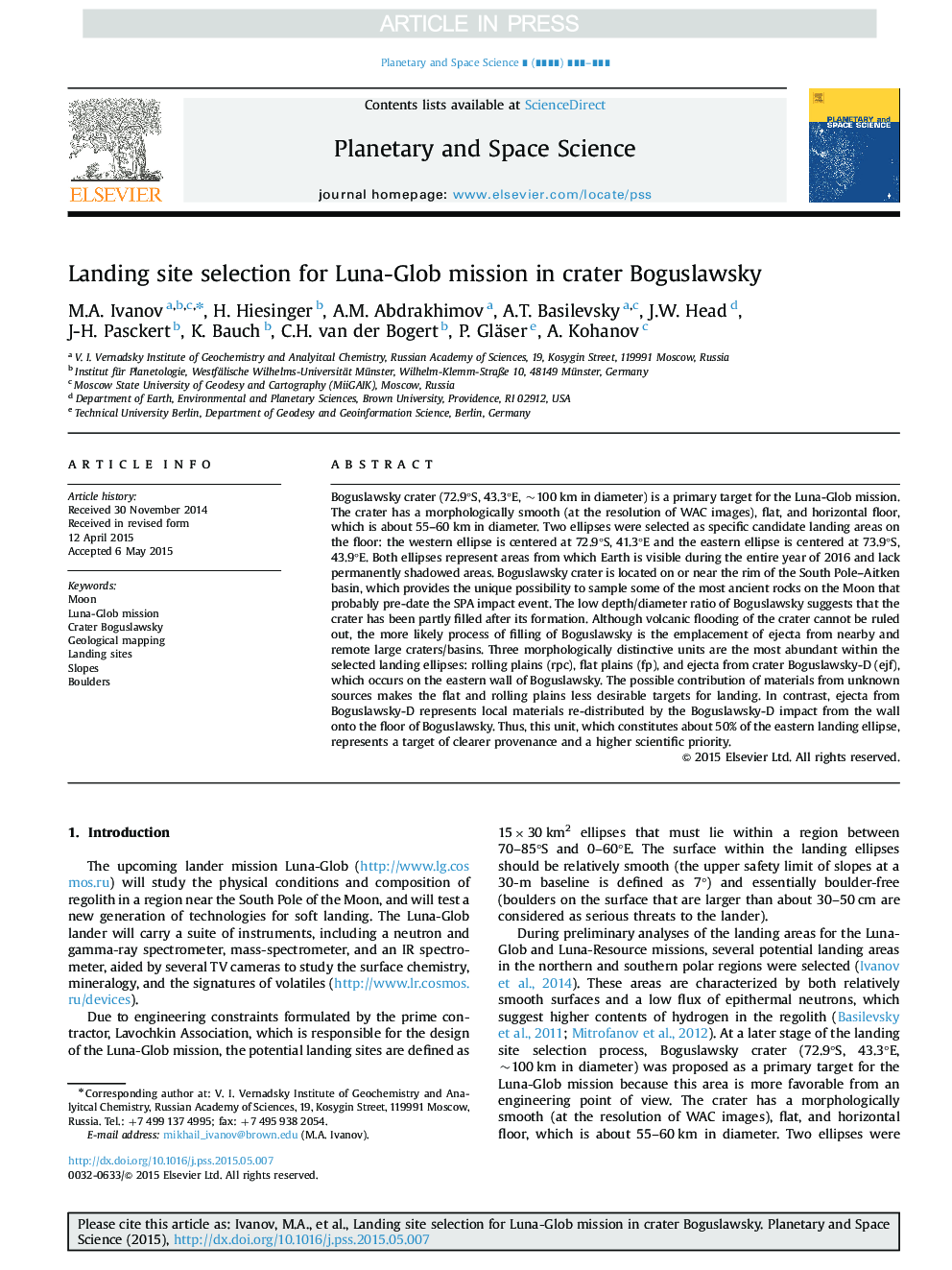| Article ID | Journal | Published Year | Pages | File Type |
|---|---|---|---|---|
| 8143021 | Planetary and Space Science | 2015 | 19 Pages |
Abstract
Boguslawsky crater (72.9°S, 43.3°E, ~100 km in diameter) is a primary target for the Luna-Glob mission. The crater has a morphologically smooth (at the resolution of WAC images), flat, and horizontal floor, which is about 55-60 km in diameter. Two ellipses were selected as specific candidate landing areas on the floor: the western ellipse is centered at 72.9°S, 41.3°E and the eastern ellipse is centered at 73.9°S, 43.9°E. Both ellipses represent areas from which Earth is visible during the entire year of 2016 and lack permanently shadowed areas. Boguslawsky crater is located on or near the rim of the South Pole-Aitken basin, which provides the unique possibility to sample some of the most ancient rocks on the Moon that probably pre-date the SPA impact event. The low depth/diameter ratio of Boguslawsky suggests that the crater has been partly filled after its formation. Although volcanic flooding of the crater cannot be ruled out, the more likely process of filling of Boguslawsky is the emplacement of ejecta from nearby and remote large craters/basins. Three morphologically distinctive units are the most abundant within the selected landing ellipses: rolling plains (rpc), flat plains (fp), and ejecta from crater Boguslawsky-D (ejf), which occurs on the eastern wall of Boguslawsky. The possible contribution of materials from unknown sources makes the flat and rolling plains less desirable targets for landing. In contrast, ejecta from Boguslawsky-D represents local materials re-distributed by the Boguslawsky-D impact from the wall onto the floor of Boguslawsky. Thus, this unit, which constitutes about 50% of the eastern landing ellipse, represents a target of clearer provenance and a higher scientific priority.
Related Topics
Physical Sciences and Engineering
Earth and Planetary Sciences
Geophysics
Authors
M.A. Ivanov, H. Hiesinger, A.M. Abdrakhimov, A.T. Basilevsky, J.W. Head, J-H. Pasckert, K. Bauch, C.H. van der Bogert, P. Gläser, A. Kohanov,
